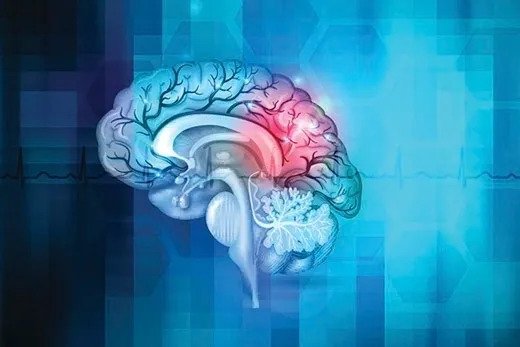Introduction
The months of May and June mark National Stroke and Aphasia Awareness months. While stroke is a diagnosis more common among older patients, strokes among adolescents and young adults are rising. Heredity and congenital conditions (a condition someone is born with) are common factors; however, the growing body of evidence points to increased stroke incidence secondary to lifestyle choices in this age group.
In this article, we will define the types of stroke, the kind that affects adolescents and young adults, the associated symptoms often confused for something other than stroke, and the discussion of lifestyle risk factors with a provider.
Types of Stroke
A stroke, or cerebrovascular accident, occurs when a part of the brain is deprived of blood flow and oxygen. The most common types of stroke are ischemic stroke when a blood vessel to the brain is blocked or clotted, and a hemorrhagic stroke, when a blood vessel bursts in the brain, causing bleeding. Lesser known stroke types consist of a transient ischemic attack or TIA, when the blood flow to the brain is temporarily interrupted, and a cryptogenic stroke or one where a cause cannot be identified.
The most common type of stroke is ischemic stroke which comprises 87% of all stroke diagnoses. For the purpose of this article, adolescents and young adults are ages 15 – 44. Some sources cited from birth to 50 years old; however, many authors agreed on the average 15 – 44 age group.
Causes of Ischemic Stroke in the Young
Cerebral Vein Thrombosis, or CVT, is a cause of ischemic stroke in the young, with a rate of 1.32 per 100,000 people. For context, this incidence rate represents approximately 123,000 people ages 15 – 44 who experience a stroke. CVT strokes occur most commonly in patients with blood clotting disorders or in females using birth control pills while smoking. Hormone imbalance and pregnancy are also cited as a cause of CVT strokes.
Another type of ischemic stroke called Cervical Artery Dissection, or CD, comprises 25% of ischemic strokes in the young age group. Cervical artery dissection occurs when a tear in the artery in the neck is due to trauma, sports injuries, straining or stretching in unusual neck positions for long periods, or high-impact episodes. The total population of the U.S. aged 15 – 44 years is 132.15 million people. An incidence rate of 2.75 (average) per 100,000 people translates to 0.2% of the population experiencing CD with a stroke in their lifetime.
Ischemic stroke in young adults comprises up to 18% of all strokes, regardless of age. These strokes are caused by various diseases and conditions ranging from chronic systemic conditions like high blood pressure or blood disorders, immune system disorders such as lupus or lymes disease, congenital heart or blood vessel abnormalities, and family history. However, the primary causes of ischemic strokes in young adults are high blood pressure and diabetes. Both of these conditions can result from lifestyle choices and may be preventable.
Lifestyle Choices Increasing the Risk of Ischemic Stroke in Young Populations
Lifestyle choice risk factors are similar no matter the age group; however, the increasing incidence of adolescents and young adults choosing risky habits is increasing. For example, adolescents use electronic nicotine delivery systems (vapes, e-cigarettes, etc.) more than tobacco products. In a 2020 article by Healthline, 21% of high school students vape or use e-cigarettes compared to 8% of teens who smoke tobacco products. This is important to note, as nicotine and tobacco products are direct causes of high blood pressure and heart disease in all age groups and increase the risk of ischemic stroke.
Other lifestyle practices that increase the risk of ischemic stroke in the young include obesity, physical inactivity, poor diet, poor sleep habits, heavy or binge drinking, and drug use such as methamphetamine, cocaine, or heroin.
Unusual Signs and Symptoms
Because stroke is associated with older patients, some adolescents and young adults may have symptoms that can easily be related to other problems. Stroke symptoms are well known, but younger patients may present with unusual symptoms. A young patient may experience extreme headache pain associated with one eye or side of the head. These symptoms are often confused with migraine headaches, and patients could be dismissed from the emergency room with pain medication instead of the necessary MRI diagnostic testing.
Further atypical or unusual symptoms consist of:
- Confusion, depressed level of consciousness (challenging to arouse, or difficulty staying awake)
- Depression, apathy, hallucinations, agitation, aggression, delusions
- Abnormal movements of the face or limbs or erratic movement of muscles
- Changes in hearing or vision, acute dizziness, poor balance
- Difficulty speaking, swallowing, or breathing
- Changes in taste, smell, touch, hearing, or sight
- Isolated headaches, or headaches that radiate from behind one eye or one side of the head
It is essential to discuss stroke risk factors with providers when an adolescent or young adult exhibits any of these symptoms. A comprehensive medical history and symptom report are vital to getting the diagnostic treatment needed to rule out an ischemic stroke in this population.
Talk to Your Provider About Risk Factors
Your healthcare provider can be a great resource to help your or your loved one control lifestyle choices that increase the risk of stroke. You need to be honest about your risk factors with your provider; it is their job to help you get well and stay well without judgment.
The information your provider needs includes but is not limited to:
- A comprehensive medical history
- A complete family medical history
- A diagnosis of high blood pressure
- If you have high blood sugars
- If you smoke or vape
- Your dietary choices
- Your exercise routine, if you have one
- Your lab results from previous exams
- If you are overweight or obese
- If you take your medication as ordered or if you are missing doses
- If you have stroke symptoms that went away and you did not treat
- Your use of alcohol or drugs
- Honest answers to other questions your provider asks you
While keeping some lifestyle information to yourself may be tempting, failing to share your risk factors with your healthcare provider is detrimental to your health. Partnering with your provider to decrease stroke risk factors may save your life or the life of someone you love.
For more information, please visit the American Stroke Association or the Centers for Disease Control and Prevention.
Disclaimer: The information provided in this article is intended to raise awareness and educate the public. It is not intended to be a substitute for diagnosis and treatment. If you have health concerns, please visit your healthcare provider.




